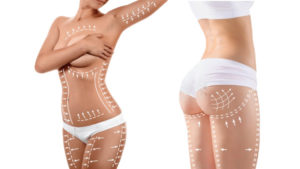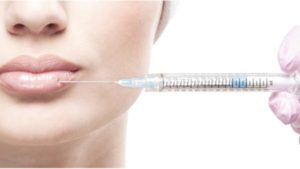
Saline vs. Cohesive Gel Implants
When it comes to choosing the right type of breast implant, there are many factors to consider, including:
- Body Frame
- Amount of Breast Tissue
- Incision Area
- Texture of Implant
- Natural Feel of Implant
About Saline Implants
Saline implants have been used since the 1960’s but gained their popularity between 1992 and 2006 due to the FDA temporary ban on silicone implants. Saline implants consist of a silicone elastomer outer shell filled with a sterile saline solution pre-filled to meet size or filled during surgery.
- Saline implants can be used for patients who have sagging breasts or have an adequate amount of breast tissue
- The Saline solution would be absorbed into the patient’s system without harm if ruptured, but the breast would reduce in size and the shell would have to be removed
- A smaller incision is possible with saline since the implants are filled with saline solutions after insertion
- The Saline implant has the ability to be adjusted in the Operating Room and may offer some advantages for asymmetry or reconstructive surgery
- Data now indicates that the saline implant has considerably more complications than the newer Cohesive Gel implants necessitating surgical replacement
- Data also indicates that 50% of all saline implants will fail within 10 years.
About Cohesive Gel Inserts
Cohesive gel implants (frequently referred to as “Gummy Bear Implants”) are filled prior to surgery with a silicone gel that is lighter, softer and more natural feeling than the saline.
- Implant provides a softer and more natural feel and better movement
- In the very rare instance of damage, the “cohesiveness” prevents leakage or migration of the gel
- Maintains its shape (less chance of ripples or folding) over a longer period of time
- The cohesive implant requires a slightly larger incision since the implant is prefilled
- More versatile implant, especially for women with very low natural body fat
- Replacement of the Cohesive implant is much less likely than the saline implant. Many countries consider them “Permanent”
Implant FAQs
Why are Cohesive Gel Implants anatomically shaped?
A breast projects more at the bottom than at the top. Therefore, it makes sense for an implant to be shaped that way. And the thinner an implant is at the top, the more gradually and naturally it will feather into the upper chest, making itself less conspicuous. Without a cohesive, form stable filler, there is little point in making shape into an implant, as the implant will ultimately lose the shape. But with a form stable filler, the shape will be maintained.
What happens if a Cohesive Gel Implants ruptures?
Many patients and even some plastic surgeons have the mistaken belief that highly cohesive implants cannot break. Unfortunately, they can break. The rate of breakage is lower than with other implants, but it can happen. The number of cases is too low to draw conclusions about what happens. But in anecdotal discussions between plastic surgeons, the gel stays within the scar tissue that is around the implant. Some people have thought that the gel is so thick that it doesn’t even leave the shell, but that is clearly not true.
How would you know if a Cohesive Gel Implant has leaked?
The numbers of patients with ruptured gummy bear implants seem to be low. In some cases, there can be a change in the shape or feel of the breast and breast implant. In one case a patient developed a large soft bump in the upper outer breast, with a bit of a depression beneath it. The breast can feel soft, look distorted, or somehow change its appearance. Presumably, there are cases in which the implant has broken but it is not perceptible to the patient or doctor. In these cases, an MRI is the only way to diagnose the problem. In fact, patients receiving any type of silicone breast implants, including highly cohesive implants, are advised to get an MRI every other year to check for “silent rupture.” While patients are all made aware of this, in reality very few actually get these MRIs.
You...Only Better
Contact us today for your free, no-obligation consultation.




